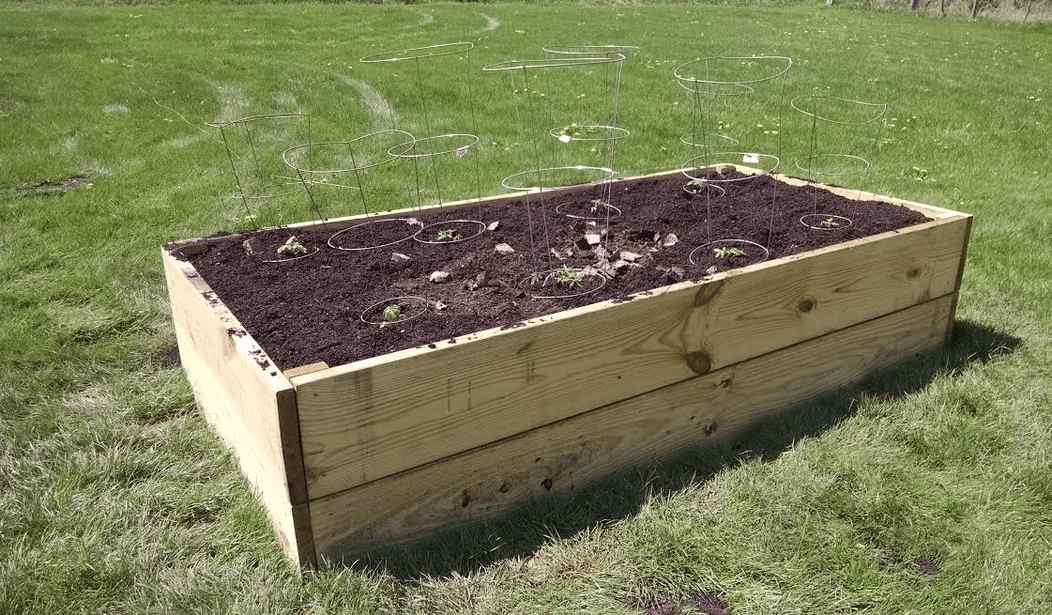With spring here it is time to think about planting a garden. Raised garden beds are an excellent choice. They require a bit of investment and work up front, but they provide a number of benefits:
- Raised beds reduce the amount of weeds. Weed seeds can lay dormant in soil from your yard. When you expose the soil to plant a garden directly in the ground, those seeds will grow alongside what you plant. Sure, weed seeds can still reach the bed by air, but they have a harder time reaching the raised surface.
- Those weeds that do reach the raised bed are easier to remove as you don’t have to bend over as much.
- You have better control over the dirt. Nutrients, whether added organically or chemically, will not seep out as much.
- Better air flow for plants. Many vegetable-producing plants do better with fresh air. When a garden is raised, the wind has more direct access to your plants roots.
- Warmer dirt. The sun can hit a raised bed as a whole, rather than just the flat ground. Many plants, including tomatoes, like warm dirt. However, be careful with perennials, as the garden will be colder in the winter.
- Raised beds also make it more difficult for certain animals (such as rabbits) to eat or otherwise damage your plants.
Next: Steps to building a raised garden.
1. Choose the right location.
The first decision is where you will put the raised bed. Pick a spot with lots of sunlight. You will also want to make sure the raised bed has plenty of clearance around it. For the sake of convenience, you should be able to easily maneuver a wheelbarrow around the raised bed. If you plan on having vining plants, such as beans or hops, you may want one side against a wall for extra support. Otherwise, it is up to you where you would like to put it.

There are hops, beans, kiwi, and tomatoes planted in those raised beds with an old picketed fence for a trellis.
2. Determine the best size for your bed.
The size of the raised bed is important for several reasons. First of all, you will want to make sure each plant has plenty of clearance. This will depend on what you are planting. For example, I have a raised bed that is 8 feet by 4 feet.

It holds 8 tomato plants (in rows of two). Smaller plants, such as peppers, do not needs as much breathing room. The height also matters. The higher the better, as it will reduce the likelihood of animals and weeds attacking. Remember, however big you make it, you have to fill the whole thing with dirt. The bigger the raised garden, the more expensive it is to fill.
3. Choose your materials wisely.
You will most likely be building your raised bed out of wood, and you’ll have several choices. You can save a lot of money by buying basic, untreated two-by-fours. However, those will rot quickly when exposed to dirt and rain. Two-by-fours are also structurally weak, as they are thin. I would recommend using boards that are at least two-by-eights. They don’t need to be thick (the “two” size is fine) but they should be wide. On the very expensive side is cedar wood. That will be the strongest and most natural, but again, expensive. The bed I just recently built was made of pressure treated two-by-twelves. They are big, heavy, strong, and very resistant to the elements. They do have two major drawbacks. Treated wood can release chemicals into the dirt which your plants may absorb. To reduce the risk you can line the inside of the bed with plastic. I used 6 mil black painter’s plastic. Wherever you buy your wood, there should be someone to help answer questions regarding wood choices.

That plastic lining not only keeps the chemicals out, but keeps the water and minerals from seeping out the sides. (Note: do not line the bottom…your garden will need drainage.) If you have untreated wood, you can also find paint that protects wood from the elements. This paint should be applied wherever wood will be touching dirt.
4. Consider your structural design.
There are literally hundreds of ways to go about designing the actual structure of a raised garden bed. You are really just building a simple box. I recommend making sure you have at least a couple inches of the sides buried. This will not only give you structural strength, but also a better barrier to protect your plants. Also, the corners should be secured with thick posts buried deeply. Mine are 2 feet in the ground.

This design required six 8-foot long two-by-twelves (two were cut in half for the ends) for the sides and two 8-foot long two-by-fours (each cut in half) for the corner posts.
If you have a longer raised bed (8 feet or longer) then you should probably have some reinforcements in the middle. Remember, this raised bed should last a number of years. You don’t want to be trying to figure out how to replace warped boards several years down the road.
5. Dirt is important.
If you are going through the trouble of building a raised garden bed, you might as well get good dirt. There is such a thing as bad and good dirt. The rule of thumb is, the darker the dirt the better.

The dirt on the left is “bad” dirt. The tan color and smooth texture indicate a lack of nutrients and organic matter to help plants grow. On the right, the dirt is dark, finely grained, and shows lots of evidence of organic nutrients plants love.
I got really good dirt for a reasonable price from a local composter. The cost of dirt is something else to consider. Remember back when I talked about size of the raised bed and that you have to fill it? My raised bed is 2 feet tall by 4 feet wide by 8 feet long. That comes out to a grand total of 64 cubic feet of dirt. This required an entire truck bed full of dirt. Also keep in mind that the dirt will settle, especially after it rains.
If you construct a solid frame with healthy dirt, it will be many years before any maintenance will have to be performed. Yet, year after year, you will enjoy the benefits (and deliciousness) of having a raised garden bed.
What creative ideas do you have for raised garden beds? I will get us started with a very functional yet aesthetically creative approach from my sister-in-law, Alex Bumb. I’d love to see pictures of your raised gardens in the comments below!

Image courtesy of Alex Bumb









Join the conversation as a VIP Member